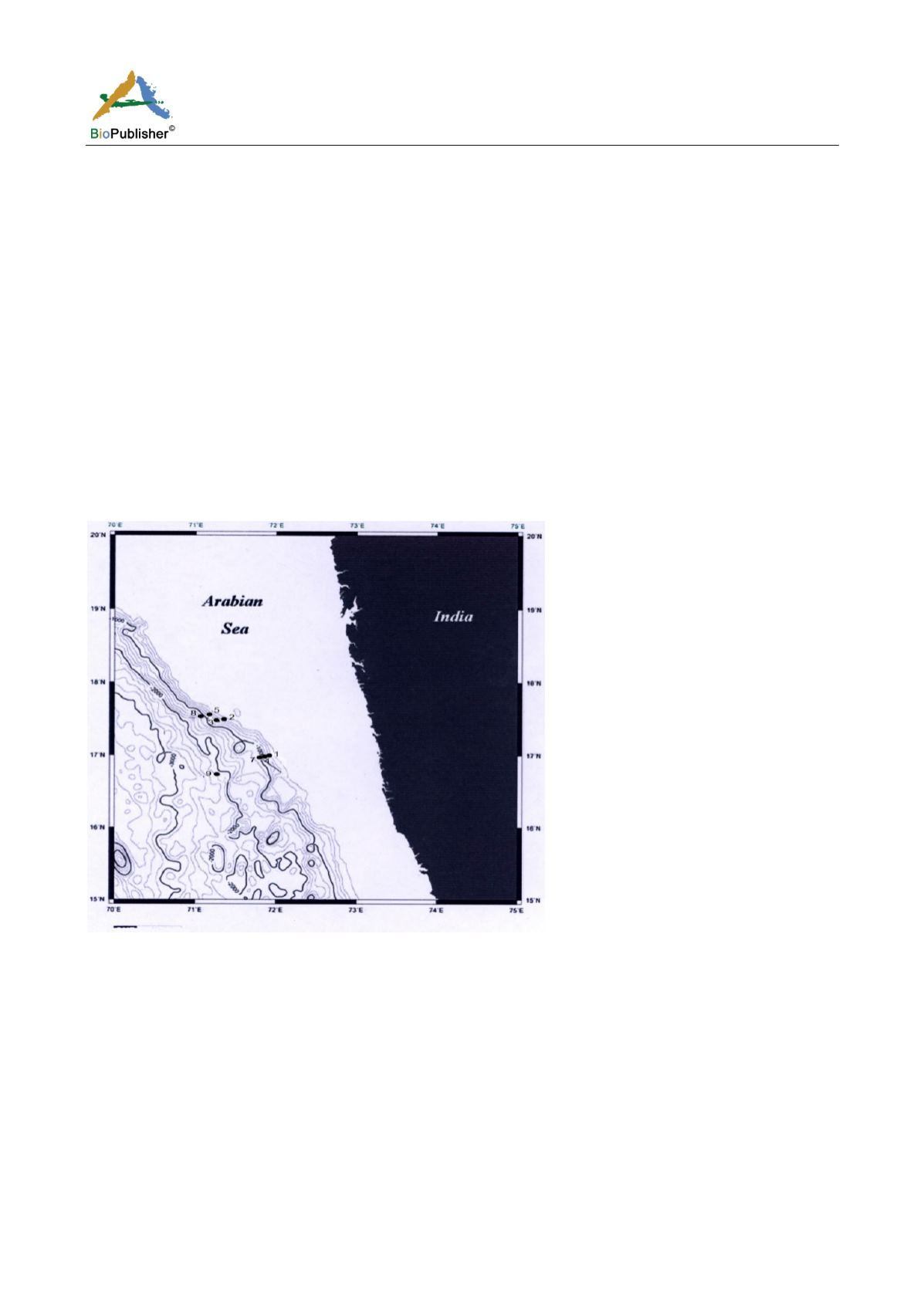
International Journal of Marine Science, 2017, Vol.7, No.7, 59-66
60
pattern metazoan meiofauna of the OMZ area in the north east Arabian Sea, the west coast of India. The data
generated are based on samples collected from a submersible robotic device.
1 Materials and Methods
This study was carried out during the cruise 08-11 of
R.V. Yokosuka
within and outside the OMZ area of western
continental margin, northern Arabian Sea (Figure 1). A total of 8 stations were covered to study the distribution
and abundance of meiofauna. The stations were divided so as to get the samples from OMZ areas (501 m, 799 m,
800 m, 703 m, 900 m) and outside the OMZ (1956 m). The submersible
Shinkai 6500
was used successfully for
collecting the sediment samples by using the robotic arms. The samples for metazoan meiofauna were collected
using the push core device. Only one set of samples were made available due to limited number of samples. The
cores collected were then sectioned onboard at an interval of 1 cm each upto a maximum depth of 20-21 cm. All
sub-samples of meiofauna were preserved in 5% formaldehyde-Rose Bengal solution and brought to the
laboratory for further analyses. Sediment samples were sieved using a set of two sieves, the upper 500 µ and
lower 45 µ. Animals retained on finer sieve were considered for meiofauna. Animals were counted and identified
to taxa level under the stereozoom microscope. All nematodes were assigned into different feeding category
according to Wieser (1953): selective deposit feeders (1A), non-selective deposit feeders (1B), epigrowth feeders
(2A), and predators (2B).
Figure 1 Bathymetry map of the study area showing stations location
2 Results
2.1 Physico-chemical parameters
The area of investigation is located in the north east Arabian Sea across the continental margin (Figure 1). Nine
stations were sampled in the depth range 501–1956 m characterized by high percentage of fine silty sediment
having large number of shell fragment. The environmental parameters is given in Table 1. The bottom water
temperature was in the range of 3.24
o
C at 1956 m to 12.4
o
C at 500 m depth. The bottom water salinity remained
high and ranged between 34.66 to 35.20 psu. The values of dissolved oxygen fluctuated widely and ranged from
0.5 to 97.2 µm (0.08 to 2.3 ml/l). The lowest dissolved oxygen was measured at a depth of 650 m in the upper
OMZ station and the highest was at a depth of 1956 m out side OMZ. Based on DO concentrations, the OMZ was
found to extend from a water depth of 501-1100 m in the study area. The non OMZ area was restricted between
1100 and 1900 m. The distribution of organic carbon was related to sediment types. The values of organic carbon
varied between 0.78 to 5.66%. In the upper 500-800 m of the OMZ the organic carbon was high. At continental


